A Closer Look at Children's Mental Health

When ten-year-old Jimmy began having stomach aches every morning before school, his mother first suspected he just wanted to stay home and watch cartoons rather than learn long division. But the stomach aches happened regularly – sometimes several times a week.
His tears were real, and led her to believe his pain was, too. She brought him to his pediatrician, where after a thorough exam his doctor diagnosed Jimmy with anxiety.
Jimmy’s story is not unique. And it shouldn’t be surprising either. CBHA’s Dr. Syed Gillani explains, “Our physical and mental health are intimately connected. Just as chronic pain over time can lead to clinical depression, which we see happen frequently, emotional stress can lead to physical pain. It’s not ‘in the patient’s head.’ We’re learning that our biological, mental, and social health are quite interdependent. When one is out-of-whack, it’s not unusual for another to decline.”
While this close relationship rings true for adults as well as children, the recent increased incidence of mental health conditions has been especially noteworthy in young people.
Increase in Diagnoses of Behavioral Health Conditions
The increase in behavioral health diagnose is often attributed to societal factors or ill-equipped parenting. The truth, however, is that clinicians now know much more about the connection between a child’s behavior, mental health, and ongoing developmental challenges. While it may be easy to dismiss these statistics as kids misbehaving, a closer look reveals that there’s more going on.
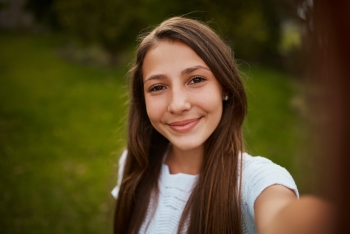
According to the Centers for Disease Control and Prevention as recently as December 2018, 1 in 6 U.S. children aged 2–8 years (17.4%) had a diagnosed mental, behavioral, or developmental disorder.
Many family, community, and healthcare factors are related to children’s mental health:
• Among children aged 2-8 years, boys were more likely than girls to have a mental, behavioral, or developmental disorder.
• Among children living below 100% of the federal poverty level, more than 1 in 5 (22%) had a mental, behavioral, or developmental disorder.
• Age and poverty level affected the likelihood of children receiving treatment for anxiety, depression, or behavior problems
Michelle Taylor, Psychiatric DNP, ARNP, PMHNP-BC, reports that she and her team of behavioral health specialists have seen more children and adolescents in the past year, primarily with diagnoses of clinical depression, anxiety, and ADHD.
Typical – or Something to Worry About?
Taylor says, “When the behavior change is persistent, significant, and is impacting normal routines or relationships, it’s worth a professional opinion. Stomach aches every day, frequent headaches, not wanting to go to school, poor academic performance – all of these are examples of changes in behavior that can mean a child has depression, anxiety, or possibly ADHD or a learning disability. Sometimes, though, deeper digging reveals that the child is being bullied. Unfortunately, we are seeing a lot of that.”
Early diagnosis and services for children and their families can make a significant difference in the lives of children with behavioral health or learning issues.
Healthy Mind, Healthy Child
CBHA subscribes to a holistic approach to health, which means that all parts of the patient’s life are considered: physical, emotional, social, and spiritual. CBHA’s Behavioral Health team regularly treats:
Anxiety
Anxiety involves more than temporary worry or fear. For a person with an anxiety disorder, the anxiety does not go away, and can get worse over time. The symptoms can interfere with daily activities or schoolwork. Often the symptoms can affect relationships. There are several types of anxiety disorders, including generalized anxiety disorder, panic disorder, and various phobia-related disorders.
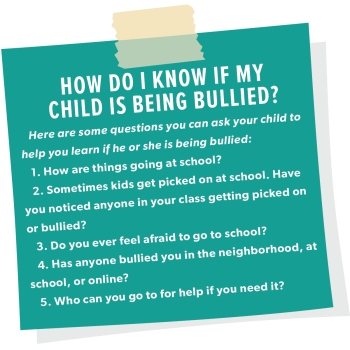 ADHD
ADHD
Attention Deficit / Hyperactivity Disorder (ADHD) is a brain disorder marked by an ongoing pattern of inattention and/or hyperactivity or impulsivity that interferes with functioning or development. Inattention, impulsivity, and hyperactivity are key behaviors of ADHD.
Some children with ADHD have problems with only one of the behaviors, while others have both inattention and hyperactivity/impulsivity. Most children with this diagnosis have the combined type of ADHD.
In preschool, the most common ADHD symptom is hyperactivity. It is normal to have some inattention, unfocused motor activity and impulsivity at this age, but for those with ADHD, these behaviors are more severe, occur more frequently, and interfere with or reduce the quality of how they function at home, socially, or at school.
Behavioral Issues
Behavioral issues in children vary, but can include fighting, lying, stealing, and defying authority figures. When these behaviors are frequent, it’s time to examine why.
Bullying
The Journal of the American Medical Association reports that one-third of U.S. children experience bullying, either as a target, or as a perpetrator.
Both victims and bullies need attention from parents and healthcare providers to enable them to overcome the problems associated with bullying behaviors. If your child is being bullied or you suspect depression, anxiety, or any behavioral health issue, the knowledgeable, compassionate team of trained specialists want to hear from you.
"Bullying is unwanted, aggressive behavior among school-aged children that involves a real or perceived power imbalance. The behavior is repeated or has the potential to be repeated over time. Both kids who are bullied and those who bully others may have serious, lasting problems as a result of the behavior," said Taylor.
In order to be considered bullying, the behavior must be aggressive and include:
• An imbalance of power. Kids who bully use their power – such as physical strength, access to embarrassing information, or popularity – to control or harm others. Power imbalances can change over time and in different situations, even if they involve the same people.
• Repetition. Bullying behaviors happen more than once or have the potential to happen more than once.
Examples of bullying include actions such as making threats, spreading rumors, attacking someone physically or verbally, and deliberately excluding someone from a group.
Social Anxiety
Social anxiety is the fear of being judged and evaluated negatively by other people, leading to feelings of inadequacy, inferiority, self-consciousness, embarrassment, humiliation, and depression. Children with high levels of social anxiety often have difficult making friends, which can lead to loneliness and isolation.
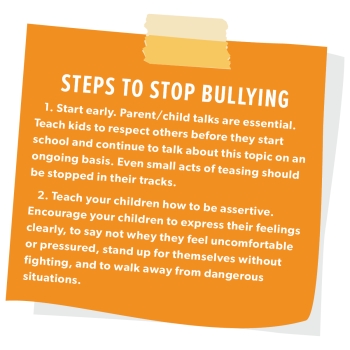 Low Self-Esteem
Low Self-Esteem
Children with low self-esteem tend to be critical of themselves. Some depend on the approval and praise of others when evaluating self-worth. Others may measure in terms of successes; some will accept themselves only if they succeed, not if they fail.
A person with low self-esteem may show some of the following characteristics:
• Heavy self-criticism and dissatisfaction
• Hypersensitivity to criticism with resentment against critics and feelings of being attacked
• Chronic indecision and an exaggerated fear of mistakes
• Excessive desire to please and unwillingness to displease others
• Perfectionism, which can lead to frustration when perfection is not achieved
• Neurotic guilt, dwelling on or exaggerating the magnitude of past mistakes
• General hostility and defensiveness or irritability without any clear cause
• Pessimism and a general negative outlook
• Envy and overall resentment
• Tendency to view temporary setbacks as permanent, intolerable condition.
Fostering Resilience
According to research from the Center of the Developing Child at Harvard University there are a common set of factors that predispose children to positive outcomes, even in the face of significant adversity or a diagnosis of a behavioral health issue.
Children who demonstrate resilience in response to one form of adversity may not necessarily do so in response to another. Yet when these positive influences are operating effectively, they “stack the scale” with positive weight and optimize resilience across multiple contexts. These counterbalancing factors include:
1. Facilitating supportive adult-child relationships;
2. Building a sense of self-sufficiency and perceived control;
3. Providing opportunities to strengthen adaptive skills and self-regulatory capacities; and
4. Mobilizing sources of faith, hope, and cultural traditions.
In short, when parents, teachers, and caregivers create as many opportunities as possible for creating connection, they can’t help but encourage a sense of belonging, and a feeling of significance.
Knowledge is Power
You are your child’s best advocate, but we want to be your partner in health – both physical and mental. Holistic approaches to health keep you and your child healthier. May is Mental Health Awareness Month.
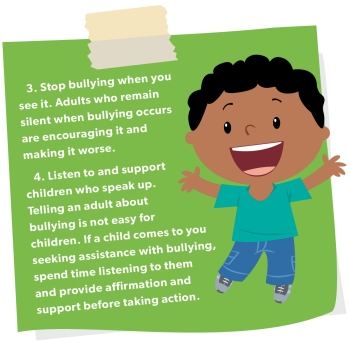 How do I know if my child is being bullied?
How do I know if my child is being bullied?
Here are some questions you can ask your child to help you learn if he
or she is being bullied:
1. How are things going at school?
2. Sometimes kids get picked on at school. Have you noticed anyone in your class getting picked on or bullied?
3. Do you ever feel afraid to go to school?
4. Has anyone bullied you in the neighborhood, at school, or online?
5. Who can you go to for help if you need it?
Steps to Stop Bullying
1. Start early. Parent/child talks are essential. Teach kids to respect others before they start school and continue to talk about this topic on an ongoing basis. Even small acts of teasing should be stopped in their tracks.
2. Teach your children how to be assertive. Encourage your children to express their feelings clearly, to say not whey they feel uncomfortable or pressured, stand up for themselves without fighting, and to walk away from dangerous situations.
3. Stop bullying when you see it. Adults who remain silent when bullying occurs are encouraging it and making it worse.
4. Listen to and support children who speak up. Telling an adult about bullying is not easy for children. If a child comes to you seeking assistance with bullying, spend time listening to them and provide affirmation and support before taking action.
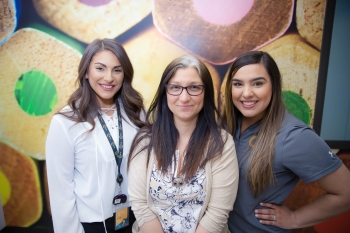 “Both victims and bullies need attention from parents and healthcare
providers to enable them to overcome the problems associated with bullying
behaviors. If your child is being bullied or you suspect depression, anxiety,
or any behavioral health issue, the knowledgeable, compassionate team
of trained specialists want to hear from you.”
“Both victims and bullies need attention from parents and healthcare
providers to enable them to overcome the problems associated with bullying
behaviors. If your child is being bullied or you suspect depression, anxiety,
or any behavioral health issue, the knowledgeable, compassionate team
of trained specialists want to hear from you.”
If you have a behavioral health concern for your child, call Michelle Taylor and the CBHA team today: 509.488.5256